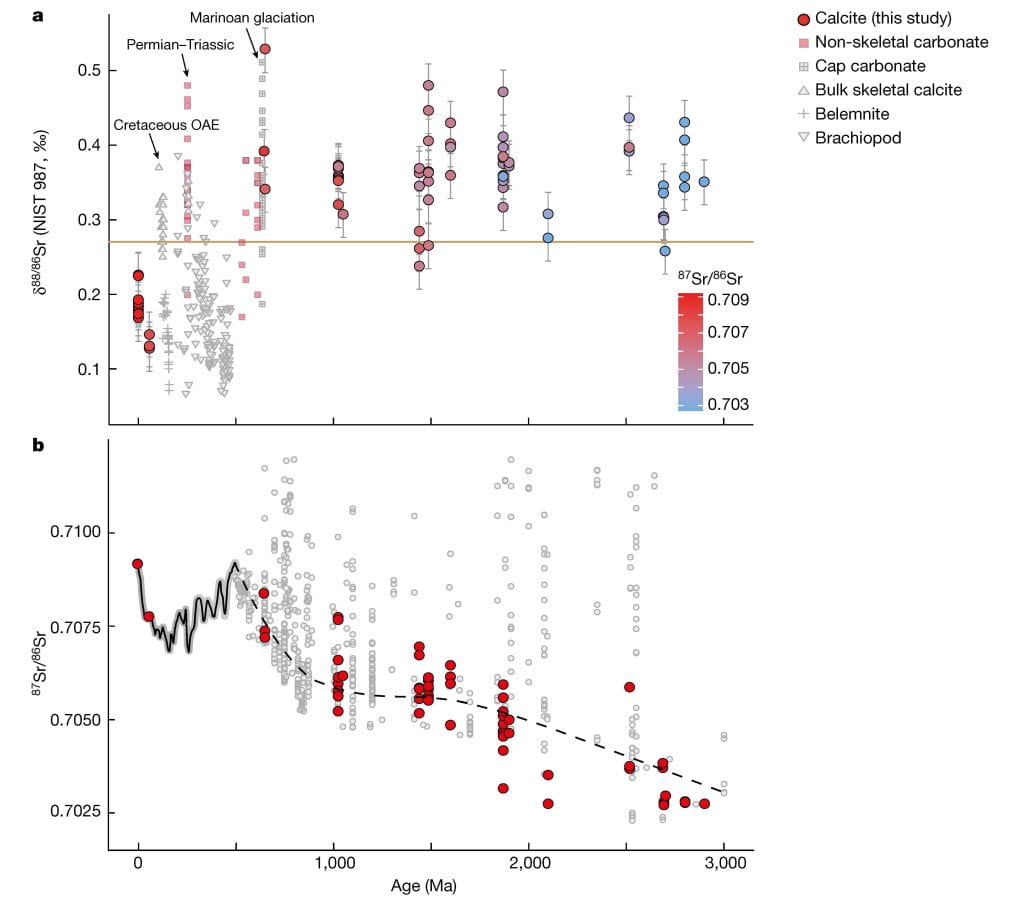Marine Carbonate Factory Evolution
Members of the Tarhan Lab are also placing more robust constraints on the evolution of Earth’s marine “carbonate factory”—the settings, modes and mineralogies of carbonate sediments produced and buried in the oceans. The carbonate factory is intimately linked to marine chemistry and the body plans and ecologies of carbonate-biomineralizing animals, algae and protists. Additionally, the subduction of seafloor sediments rich in carbonate minerals is the primary mechanism by which carbon is cycled from Earth’s surface environments to its deep interior (from which it is returned to the surface through volcanic and metamorphic fluxes of carbon dioxide); the carbonate factory therefore also helps regulate climate and habitability on a planetary scale. Today the majority of the carbonate factory is composed of “skeletal” carbonates—biominerals whose precipitation was facilitated or actively regulated by living organisms. However, the skeletal carbonate factory is of relatively recent origin; for the majority of Earth’s history carbonate minerals were precipitated abiotically or under microbial influence. Some of the longest-standing questions in Earth’s history concern how the carbonate factory was regulated during Earth’s earliest (and longest stretch of) history, the Precambrian (4600–540 million years ago)—and to what extent this changed with the subsequent emergence of carbonate-biomineralizing animals. Recently,we tackled this fundamental question by applying a novel geochemical proxy—the stable strontium isotope system—to a large sample-set of well-preserved carbonate rocks formed in shallow marine environments and ranging in age from the middle of the Archean Eon (ca. 3000 million years ago) to carbonates forming on today’s seafloor. This long-term record (Wang et al., 2023, Nature) shows that carbonate saturation state—the readiness with which carbonate minerals precipitate out of seawater—was remarkably high for much of Earth’s earlier history, but that this changed with the radiation of carbonate-skeletonizing animals at the end of the Precambrian. Moreover, these data also suggest that the majority of Precambrian carbonates precipitated in the upper few centimeters of the seafloor, as so-called “authigenic” precipitates, and that one potential locus for this ancient authigenic carbonate factory may have been the deep sea—throwing in doubt the longstanding assumption that the deep sea was barren of carbonates until calcareous plankton appeared on the scene approximately 200 million years ago.
